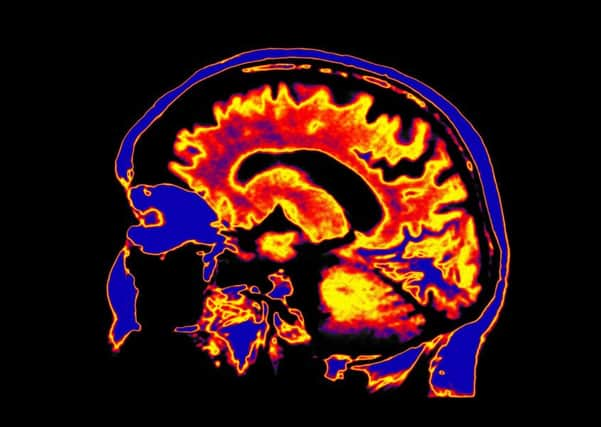Brain screening for prisoners could cut reoffending and suicides


Experts believe Scotland could lead the world in understanding how past head trauma can bring individuals into contact with the criminal justice system.
Research published this year showed a quarter of inmates in Scotland’s prisons have been hospitalised following a knock to the head at some point in their lives, an injury which could potentially lead to personality changes including increased aggression and poorer judgement.
Advertisement
Hide AdAdvertisement
Hide AdNow neuropsychologists hope the introduction of routine screening could identify those at risk.
Tom McMillan, a professor of clinical neuropsychology at Glasgow University, said a short questionnaire could be introduced for those entering prison, with a ten-minute screening assessment for those needing further investigation.
“The idea would be that when prisoners come into prison, they would get a short health interview and it would have a brief questionnaire about head injuries that would signpost to whether there needed to be a screening assessment or not,” he said.
McMillan said that while something similar currently exists for those entering police custody, there is no equivalent in prison.
“I wouldn’t want this to be seen as separate from the other problems prisoners have; we want to integrate this with other health-related issues. The overall purpose is to reduce the likelihood of prisoners going out and re-offending as there’s a high rate of re-offending in the first year after release.”
He added: “We’re in a good position in Scotland to be one of the world leaders in this area.”
Dr Ivan Pitman, who carried out a study on brain injuries at HMP Leeds on behalf of the Disabilities Trust, said young working-class men were not only the most likely to be in prison, but also one of the group’s most likely to have sustained a head injury.
He said: “You expect going into a prison to find a rate possibly higher than the 12 per cent rate in the general population, but the shocker when we went to Leeds was that we found a prevalence rate of 47 per cent, almost half of prisoners.
Advertisement
Hide AdAdvertisement
Hide Ad“It seems that our vulnerable individuals – our prisoners, our homeless population, some veterans, refugees – are showing some evidence of them having histories that are indicative of them suffering brain injuries. These excluded, marginalised populations have significant history of brain injury.”
Amid growing awareness of the health risks associated with repeated blows to the head, scientists in the United States have begun drawing links between contact sports such as American football and chronic traumatic encephalopathy (CTE), a type of dementia.
In 2017, it emerged that Aaron Hernandez, 27, a former New England Patriots player, had been suffering from a “severe case” of the disease when he killed himself in prison while serving a life sentence for murder.
Pitman said there was “no shadow of a doubt” there are people in the UK prison system suffering from CTE.
And he said there are people with head injuries who have been misdiagnosed as suffering from mental health problems. Those who have suffered a head trauma known to be up to five times more at risk of suicide.
He said: “A brain injury never really injects bad behaviour into somebody, but it takes away their ability to stop themselves doing things. It exacerbates pre-existing behaviours.
“Guys who might previously have steered clear of the criminal justice system end up coming into it.”
On screening, he added: “How is it that we’ve got half the prison population with this history, but we’re not routinely asking about it? That seems a real crime.”